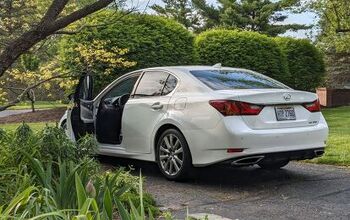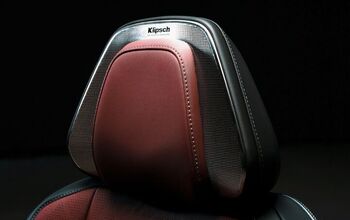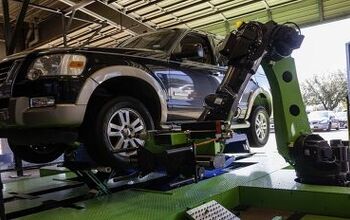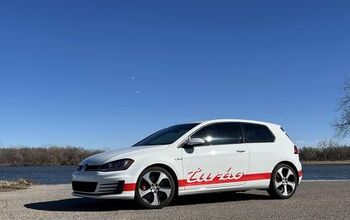Hammer Time: Indian Summer
The dogs days of July have been anything but. 83 dealers visited a well-established independent sale this Monday that offered only 93 vehicles. They came to buy and let me tell ya… the dealers paid all the money in the world for some very slim pickings. They had no choice because inventory now is getting near famine levels in the wholesale markets.
A 15 year old Ford Escort with an announcement of ‘Transmission Needs Service’ went for $1200. An even older Bonneville with 188k miles and a multi-colored Caribbean styled exterior went for $1100. Even a 1999 Dodge Intrepid that had a castanet band built into it’s 2.7 Liter engine (think of the sound of a hundred rods knocking) managed to go up to $1000. These are tax season prices for glorified junk that will rarely move in most healthy markets. But even this junk is breaking the four digit barrier…. and that’s not all…
A well marketed and trusted independent auction will have an inventory to dealer ratio of about two to one these days. This is opposed to the four to five to one ratio (five cars per dealer) that had been the norm only a year ago. Dealers that used to visit only a couple of sales a week are now going to four to five sales just to ‘try’ to fill in their inventory needs. Most of them are simply not succeeding. I’m even seeing other auctions buy up inventory at less established sales just to have what they need for their customer base.
What does all this fierce competition mean for the public? Well, with rare exception the used car deals are going to be more difficult to find. On the used car end you’re going to see more dealers who self-finance. They will vary from the Carmax’s, to the Drivetime’s, to the J.D. Byrider’s. But they all have the exclusive focus of maximizing the return beyond common market prices. The large size of these organizations mandate that they find the cars that are needed no matter what. If that means pushing a Miata that sold $4,000 wholesale only a couple years ago to the $5500 range then that’s what will be done. Without inventory they die and they are often traveling several states just to find it.
Even several of the Latino superstores in my neck of the woods have come to the point where they are literally moving the market. The $500 to $2500 wholesale levels used to be the sweet spot for them. Now it’s stretching all the way to the $4000 level and even beyond. A big part of this has to do with the emerging wealth for the savers among them. But also, it’s no longer an uncommon thing to see native English speakers look at the very same vehicles. The increased interest in used cars, much of which is now involuntary, has encouraged some folks to go off the beaten path to find the good deal. Unfortunately the culture of negotiating doesn’t always translate well for these bargain seekers, and I get to hear more amusing stories from these dealers than successful ones in my travels.
The increased competition at the auctions will continue to happen so long as finance companies shy away from an increasingly risky public. A customer that can’t get a loan from a bank or credit union will often forgo the virtues of beaterdom and instead choose to ‘float the note’ with a two to seven year old vehicle. In the end they pay more for the same type of vehicle, and for good reason.
The buy-here pay-here dealers that serve these credit challenged folks experience a much riskier pool of customers than most finance companies. A third of BHPH deals will go south which means that the other two-thirds have to more than make up the difference. The payments are usually reasonable. But the length of payments is getting increasingly long and many customers seem to be completely oblivious towards anything but the look of the car and the monthly payment. 48 to 72 months is now becoming a norm for the higher end vehicles.
How do we stop all this madness? Simple. Take care of your ride. Remember to change the coolant. The tranny fluid. The belts and hoses. Even if it means going a couple hundred in debt. That will pale to a five-figured tombstone of servitude that only happens through ignorance. A few years ago I was a ‘cash’ dealer. Nothing made me happier than seeing someone buy a vehicle for cash that will easily last another seven to ten years with proper care. As much as my work takes me to the BHPH side of the equation these days, I would happily return to that wonderful world of cash if more customers could follow in the same direction.
More by Steven Lang
Latest Car Reviews
Read moreLatest Product Reviews
Read moreRecent Comments
- Bill Wade I think about my dealer who was clueless about uConnect updates and still can't fix station presets disappearing and the manufacturers want me to trust them and their dealers to address any self driving concerns when they can't fix a simple radio?Right.
- FreedMike I don't think they work very well, so yeah...I'm afraid of them. And as many have pointed out, human drivers tend to be so bad that they are also worthy of being feared; that's true, but if that's the case, why add one more layer of bad drivers into the mix?
- ChristianWimmer I have two problems with autonomous cars.One, I LOVE and ENJOY DRIVING. It’s a fun and pleasurable experience for me. I want to drive my cars, not be driven by them.Two, if autonomous cars have been engineered to a standard where they work 100% flawlessly and don’t cause accidents, then freedom-hating governments like the POS European Union or totally idiotic current German government can literally make laws which ban private car ownership in their quest to save the world from climate change bla bla bla…
- SCE to AUX Everything in me says 'no', but the price is tempting, and it's only 2 hours from me.I guess 123k miles in 18 years does qualify as 'low miles'.
- Dwford Will we ever actually have autonomous vehicles? Right now we have limited consumer grade systems that require constant human attention, or we have commercial grade systems that still rely on remote operators and teams of chase vehicles. Aside from Tesla's FSD, all these systems work only in certain cities or highway routes. A common problem still remains: the system's ability to see and react correctly to obstacles. Until that is solved, count me out. Yes, I could also react incorrectly, but at least the is me taking my fate into my own hands, instead of me screaming in terror as the autonomous vehicles rams me into a parked semi


































Comments
Join the conversation
America seems to be waking up. A $10,000-15,000, 70K mile 5 year old Honda makes much more sense than a brand new one for twice the price over 4-5 years when you factor in how much less money you will lose in depreciation. The numbers get better the more reliable a car is known to be and the older you're willing to go (and of course the amount of maintenance you're willing to do/anticipate). Hell, even on the much lower end (~5K) you can find some decent iron now, given your understanding that you will have to do some maintenance. But even still, you probably wouldn't lose as much skin as if you bought the same car new and kept it over the same amount of time. Funny that it took an economic catastrophe for America to realize this. You go to a 3rd world country, people are still driving Datsuns and Benzes from the 70s. You just have to maintain the cars, and they will run forever.
Somebody said "a shrinking middle class"....yes indeed. Combine that fact with millions of baby boomers retiring or preping for it. Now you got a whole lot of former "new" car buyers buying used. My golf buddy bought a 2007 Tahoe. Sold his mint 03 Impala to his neighbor for top dollar,and bought the Tahoe from a dealer 100 miles from here. This is the same guy that would trade his always mint car in every 4 or 5 years,and buy a new one. He kept the Impala for 7 years and he is shooting for 10 years with the Tahoe.